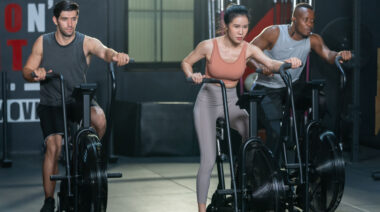As runners, we we don’t all have access to lab equipment to test improvements in VO2max, running economy, and other important variables, so it’s always reassuring when science gives us the tools we need to keep getting better. This is exactly what a recent Journal of Strength and Conditioning Research study did.
Most people use rate of perceived exertion (RPE) as their primary means of determining improvements in time. This method is great for a few reasons. First, you don’t need any equipment. You just need to know how you feel. Second, it works especially well when you’re getting on the road for the first time after winter or some other layoff. When that particularly brutal stretch of your regular run gets easier, you know you’ve made some strides (the metaphorical kind).
The problem is, RPE isn’t very reliable, especially on a day-to-day basis as you get more fit. You may feel great one day and be running slowly, or feel bad some other day despite greater performance.
Other methods people commonly employ include their time to finish their run and their heart rate. Tracking the time works great until you change runs or have a strong headwind. Worse yet, it may not track your actual fitness. Many people could run their present route faster or slower without a change in fitness level. And your heart rate may be a good way to pace yourself, but it can fluctuate wildly on every hill and depends heavily on outside factors like temperature and caffeine use.
In the Journal study, researchers wanted to find a way to track results that was as simple as these above common methods, but had the accuracy and usefulness of laboratory tests. They looked at some other research to try to find a simple method that hadn’t been tested before but which held good promise, and they came up with a heart rate–running speed index. This test is similar to running economy. Essentially, you simply have to measure your heart rate at any given running speed (or vice versa) and track both variables over time. The idea is that if you can run faster at a given heart rate, or maintain a lower heart rate at a given speed, your fitness would have improved.
The researchers compared the efficacy of this test against lab tests like VO2max and a maximal treadmill test. The participants underwent the lab tests before and after a 28-week training program, as well as once at week seven and again at week fourteen. The first half of the program was a basic running program, and the second half was a more intense version. During the entire study, the heart rate–running speed index was monitored.
The method worked well, correlating significantly to maximal running speed, anaerobic threshold, and relative VO2max. It isn’t just a simple test, it’s also a powerful means of tracking your progress over time that anyone can do.
The researchers recommended some baseline tests, but I think the average athlete can go without. If you don’t have a track or some other means to determine your speed, you can simply use your time on a specific run to measure your average speed. Compare this to the average heart rate shown on your monitor during that run, and you should have usable data to track progress over time.
References:
1. Ville Vesterinen, et. al., “Heart Rate-Running Speed Index May Be an Efficient Method of Monitoring Endurance Training Adaptation,” Journal of Strength and Conditioning Research, 28(4), 2014.
Photo courtesy of Shutterstock.






